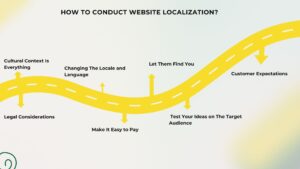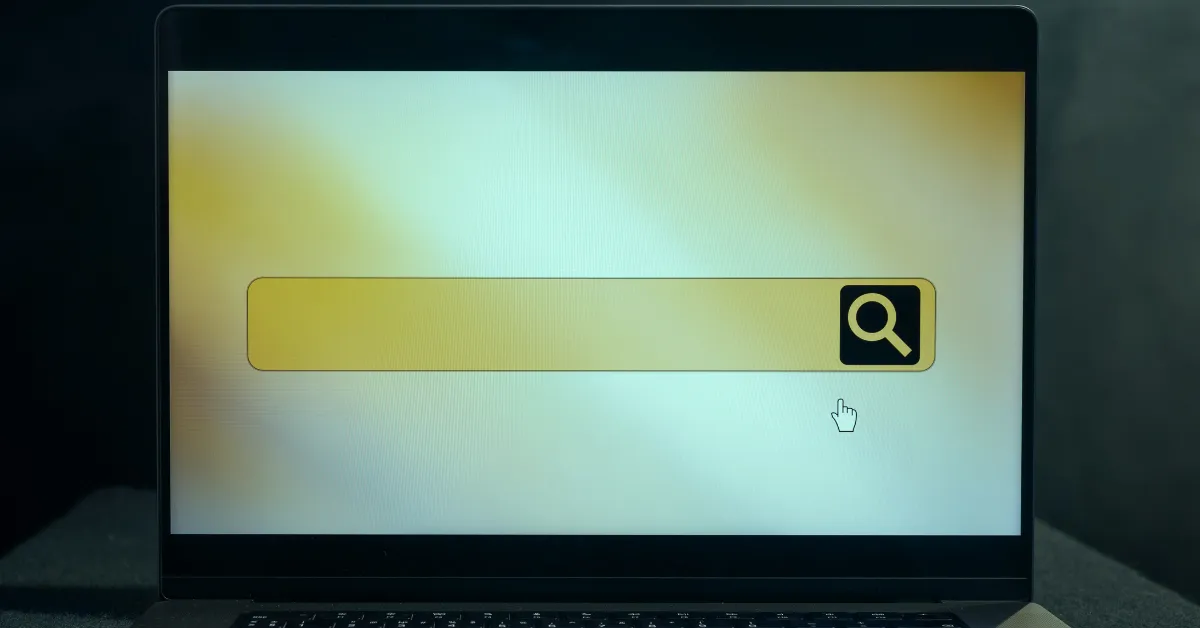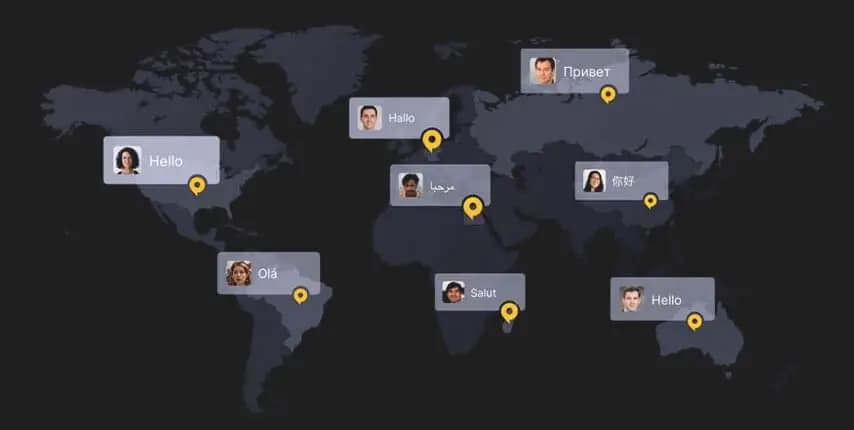Website Localization

The main goal of a Company’s Localization strategy is to make its website easily readable and local to each community in its own language. Between globalization and localization, many companies, regardless of their field of activity, choose the third path – localization, a subtle intermediary that combines the global unity of the brand image and the ideal adaptation to the specifics of national expectations.
Global expansion from New York to Beijing is one of the top priorities for businesses. CEOs rub with joy, and CMOs and production managers pull their hair out. Why? Because accessing international customers can mean higher profits, but it also means much more work. If you present your site to a global audience, you probably know little (or a lot) about localizing your site.
If your goal is to make your website more attractive to customers worldwide, good luck! Your job requires skill, determination, and coordination – to resist the temptation to blow up the wall as often as possible. Why? Because finding a website is challenging yet inexpensive. Finding the right website is not just about adding some effective plugins. If your site is related to e-commerce, you can install best WooCommerce plugins available on the internet. If you run a blog you can also find a free version of related plugins.
Why Localize?
Talking to people has never been so easy because essential parts of our lives are now online. For business owners, this may mean creating and regularly maintaining a website that best represents them. However, sometimes a website alone does not guarantee success, especially when globalization is one of the main goals. Global markets require content that (almost) everyone understands, so a website needs to be localized.
It is a complex and serious task that requires time, resources, practical knowledge, and a great deal of patience to do it correctly. Fortunately, technologies have been developed to streamline the localization process and website development integration. What makes the whole process less painful are content management systems (CMS).
Not only are they easy to use, but they also offer a variety of plugins that users can use to create a multilingual website. Plugins can be easily integrated into CAT (Computer Translation) tools to speed up the process later.
How To Conduct Website Localization?
There is much more to consider when creating and operating a multilingual website than just translation from a business perspective. Let’s take a look at a few points to keep in mind when hosting your website.
1. Cultural Context Is Everything
A thorough investigation must always precede any decision to expand your business to other markets. Website localization is an important business decision that significantly impacts how well you achieve your business goals in specific needs.
Before posting your content, work with local agencies to better understand your target audience and ensure your product meets local standards and your target audience’s core cultural values . Understanding national practices and the vast differences in the way is essential. Hire a local consultant to compare notes and make sure customers hear and understand your message.
2. Changing The Locale and Language
The most obvious thing to do is to automatically display user content in their native language as soon as it becomes available. You can do this in several different ways, and you need to plan this from the start.
Do you display the language version based on the user’s IP address or browser settings? What about countries like Switzerland with more than one official language? Ask visitors to specify their language and indicate their choice when they arrive at your site.
3. Let Them Find You
Make your localized site visible to search engines. When it comes to search engines, we don’t just focus on Google. Put yourself in the customer’s shoes and ask yourself (or ask the locals) where to look for the services your business offers. Google is a popular search engine, but a quick search in China, for example, shows that Baidu is king here. And if you are thinking of expanding your Russian activities, you can not afford to find them in Yandex.
4. Legal Considerations
Each country has its privacy policy, terms of use, complaint process, customer service, taxes, privacy policy, and more. You must ensure that the content you translate complies with local laws and accords with the local business laws. Their services are expensive but much better than paying legal fees for violating local laws.
5. Make It Easy to Pay
No business will ever succeed if customers think a product is hard to pay for or don’t trust a payment service provider. The most popular payment methods are only popular in specific markets.
PayPal is not considered as an authentic platform of payment by many online customers, so you should share and support some popular and authentic payment gateways on your site like Payoneer, Square, and Bank transfers, etc.
6. Test Your Ideas on The Target Audience
After all, the work is still not over. As mentioned earlier, a website looks like a living organism. It needs to be continuously developed to meet society’s expectations and meet your business goals. Don’t forget to test your site with targeted users. Targeted recruitment gives you access to valuable country-specific in-house knowledge.
7. Customer Expectations
It may not be a technical problem to develop and manage a multilingual website, but it is vital for the customer. If your website is in the native language of your audience, they have certain expectations.
Visitors want to speak to customer service in their native language. Providing phone support in your language only may be unprofessional for customers in other countries.
Wrapping Up
I hope you understand from this article that localization is not as easy as a direct translation. The equation has many significant components. If you forget one part, the rest will not join.
Prepare a local strategy. Talk to your team about expansion plans. What are you worried about, and what advice do you give? Take the time to find the best local translators and consultants.
The whole process takes time, so be prepared for it. Get an estimate of the time and cost and lead the process well. Don’t forget to take the time to proofread and test!









